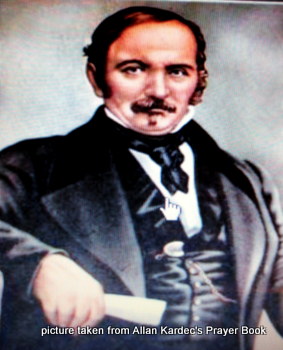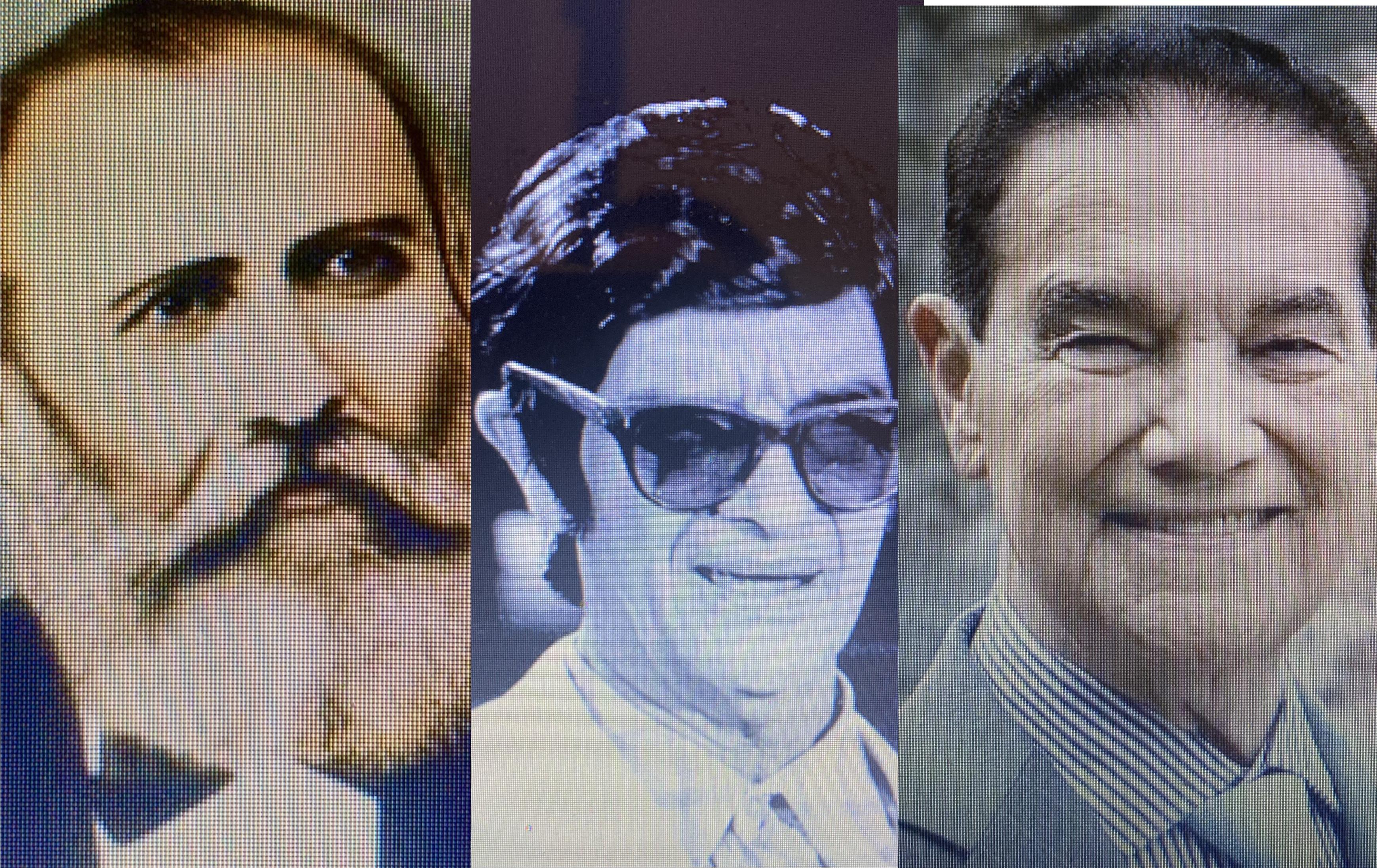Spiritism Religion
 ALLAN KARDEC -Spiritism
ALLAN KARDEC -SpiritismSpiritism Religion
Core Beliefs
Spiritism religion was founded by Allan Kardec (real name Hippolyte Leon Denizard Rivail) in the 19th century. At the heart of Spiritism lies the belief that:
- Humans are spirits temporarily inhabiting a material body, including human bodies.
- This view transforms our understanding of life and death, emphasizing that the soul never dies but evolves through different lifetimes.
- Spiritism followers see life in the physical world as a transient phase in the soul’s eternal journey.
- The spirit world, filled with disembodied spirits, is considered the true home of the soul.
Spiritism shares many ethical principles with Christianity, underscoring the importance of morality, love, and compassion towards others. However, Spiritism extends these principles into a broader spiritualist philosophy, emphasizing the continuous improvement of the soul through successive incarnations. This belief system encourages followers to cultivate virtues and work towards spiritual enlightenment.
Spiritist centers are instrumental in nurturing moral and spiritual growth. These centers serve as hubs for education and community engagement, hosting study groups and lectures based on the teachings of Allan Kardec. These activities help followers deepen their understanding of the doctrine and strengthen their commitment to its principles.
Practices in Spiritism
Mediumship is the cornerstone of Spiritist practice, serving as the primary method for engaging with the spirit world. Practitioners, known as mediums, act as intermediaries between the living and disembodied spirits. There are two main types of mediumship: mental mediumship, which involves receiving messages through senses like hearing and seeing, and physical mediumship, which involves the materialization of spirits. These practices, along with other mediums, allow Spiritism followers to communicate with spirits and gain insights into the spiritual realm.
Spiritist healing practices often involve transferring energy from both the medium and the spirits. These healing sessions aim to restore balance and harmony within the individual, addressing both physical and spiritual ailments. The belief in spirits’ influence on the material world underscores the significance of these healing practices, often conducted during group sessions at Spiritist centers.
Spiritist centers are also venues for regular meetings where followers gather to communicate with spirits. These gatherings offer opportunities for collective spiritual growth and strengthening community bonds. These practices help followers enhance their understanding of spiritual laws and improve their moral and spiritual well-being.
Historical Background
Spiritism traces its roots to the mid-19th century when French educator Allan Kardec coined the term to describe a new religious movement influenced by earlier spiritualist practices. Kardec’s exploration of mediumistic phenomena began in the 1850s after witnessing table-turning, which sparked his interest in spiritual communication. This period marked the beginning of Kardec’s journey into the world of spirits, leading to the development of what is now known as Kardec’s Spiritism.
Kardec’s work culminated in the Spiritist Codification, fundamental texts published between 1857 and 1868, which are essential to understanding Kardec’s spiritism.
These works include:
- The Spirits’ Book
- The Mediums’ Book
- The Gospel According to Spiritism
- Heaven and Hell
- The Genesis
- Various spiritist books
These spiritist books established the structure and doctrines of Spiritism. Through these spiritist books, Kardec emphasized the scientific, philosophical, and religious dimensions of the doctrine, aiming to provide a comprehensive understanding of spiritual phenomena.
Key periodicals like ‘Spirit Review’ and ‘The Spiritist Magazine’ further facilitated the spread of Spiritism, significantly disseminating Kardec’s teachings and integrating Spiritism into popular culture. Today, Spiritism continues to thrive, particularly in Brazil through the Brazilian Spiritist Federation where spiritism has been embraced by a large segment of the population.
Spiritism and Science
Allan Kardec’s efforts to reconcile scientific inquiry with religious beliefs were crucial in developing Spiritism. During the 19th century’s rapid social change, Kardec bridged the gap between science and spirituality, emphasizing rational analysis and empirical observation in exploring spiritual phenomena. This approach set Spiritism apart from other religious movements of the time, fostering a harmonious relationship between science and spirituality.
Spiritism uses rational analysis and empirical observation to study interactions between the physical reality and spirit worlds. Proponents argue that a scientific approach to spiritual phenomena enhances spiritual understanding, suggesting the two domains are complementary. This perspective aligns with Kardec’s belief that the principles of Spiritism could withstand scrutiny and validation through scientific methods.
Many followers advocate this harmonious relationship, believing rational inquiry leads to deeper understanding of spiritual laws and existence’s nature on earth. By integrating scientific principles from life sciences into their spiritual practice, spiritualists strive to create a balanced approach that honors both empirical evidence and spiritual insights, reflecting aspects of platonist philosophy in its purest form.
Spiritism and Other Religions

Spiritism’s relationship with other religions is intricate and multifaceted. Spiritists believe in a supreme, formless God who created the universe, encompassing physical and spiritual realms. This belief in a universal intelligence aligns Spiritism with many religion traditions but distinguishes it through its unique spiritualist philosophy. Unlike traditional Christianity, which emphasizes a personal relationship with Jesus Christ, Spiritism views God as an all-encompassing intelligence accessible through understanding and practice.
Spiritism holds Jesus Christ in high regard, viewing Jesus Christ as a superior spirit and teacher exemplifying the moral and ethical principles Spiritists strive to emulate. This perspective extends rather than opposes traditional Christian views into a broader spiritual context. Spiritists recognize many religious paths, believing all sincere efforts to understand and connect with the divine deserve respect.
Proponents often counter criticisms by emphasizing the philosophies underlying their beliefs, aiming to provide moral and ethical guidance rather than promote supernatural claims. By focusing on love, compassion, and moral development, Spiritism seeks to foster unity and mutual respect among different religious traditions.
Media and Literature in Spiritism
Media and literature have significantly aided the dissemination of Spiritism. Allan Kardec’s works, including ‘Spirit Review’, ‘Journal of Psychological Studies’, and ‘The Spiritist Magazine’, played a crucial role in spreading the doctrine. These publications provided a platform for discussing spiritual phenomena and sharing Spiritism teachings with a broader audience. Kardec’s works became widely read, especially in Brazil, where Spiritism found a fertile ground for growth.
In modern times, media continues to promote Spiritism. The Brazilian series ‘Escrito nas Estrelas’ incorporates Spiritist themes into its narrative, bringing the concepts of Spiritism to mainstream audiences. Brazilian filmmaker Wagner de Assis directed ‘Nosso Lar’, a film that explores Spiritism’s concepts and afterlife beliefs. These media representations have helped demystify Spiritism and present its principles accessibly and engagingly.
Chico Xavier, a renowned Spiritist medium, authored over 490 psychographic books, significantly boosting Spiritism’s visibility in Brazil. His works, which claimed to channel messages from spirits, have been widely read and respected, further solidifying the influence of Spiritism in Brazilian culture.
The Role of Spiritual Centers
Spiritual centers are the lifeblood of the Spiritist movement, serving as hubs for education, prayer, and a philanthropic society. These centers are essential for community engagement, offering spaces for learning about spiritual laws, participating in prayer and meditation, and engaging in mediumistic meetings. Emphasizing community and collective spiritual growth is a hallmark of Spiritism and a popular movement.
Educational sessions at Spiritist centers deepen the understanding of spiritual laws and improve personal development. These activities often include lectures, study groups, and discussions based on the teachings of Allan Kardec. By fostering continuous learning and self-improvement, Spiritist centers help followers cultivate virtues and advance in their spiritual journey to live a more fulfilling life.
In 2022, approximately 13,000 Spiritist centers were noted in Brazil, playing a significant role in supporting the physical and mental health of their communities. Spiritism prohibits charging fees for spiritual services, emphasizing altruism and the importance of helping others without seeking personal gain. This principle of selfless service is central to the Spiritist doctrine and is reflected in the activities of community centers.
Prominent Figures in Spiritism
 Dr. Bezerra, Chico Xavier and Davildo Franco
Dr. Bezerra, Chico Xavier and Davildo FrancoProminent figures have played a crucial role in shaping and spreading Spiritism. One such figure is Chico Xavier, a renowned Brazilian medium who claimed to channel messages from spirits, notably his guide Emmanuel. Emmanuel’s guidance influenced Chico Xavier’s spiritual journey and writings, emphasizing discipline and fidelity to Spiritism’s principles. Chico Xavier’s extensive philanthropic efforts, funded by his published works, significantly boosted Spiritism’s visibility and acceptance in Brazil.
Davildo Franco was a renowned speaker and medium from Brazil. He founded the charity Mansão do Caminho in Salvador, Bahia, which serves and shelters thousands of people, including hundreds of homeless children whom he adopted. With the guidance of his spirit guide, Joanna de Ângelis, and other spirits of light, he psychographed more than 250 published books. The proceeds from the sales of these books were donated to the charity and other philanthropic organizations.
Another key figure in the history of Spiritism is Dr, Bezerra de Menezes, often referred to as the “Kardec of Brazil.” His influence helped catalyze the popularity of Spiritism in Brazil, where a significant number of followers were recorded by the early 20th century. Bezerra de Menezes’ contributions were instrumental in establishing a strong foundation for Spiritism in Brazilian culture. He was also nicknamed the Doctor of the Poor because of his dedication and love for treating the poor and those who could not afford medical care.
No discussion of Spiritism is complete without mentioning Allan Kardec, whose real name was the foundational figure of the movement. French educator Allan Kardec is credited with establishing the doctrines and practices of Spiritism. His works, collectively known as the Spiritist Codification, laid the groundwork for the entire movement, providing a comprehensive framework for understanding spiritual phenomena.
Spiritism and reincarnation

Reincarnation, a central tenet of Spiritism, is defined as the return of a soul to a new physical body. This concept is distinct from the idea of resurrection, which implies returning to the same body. In Spiritism, reincarnation is viewed as a necessary process for spiritual development and moral improvement, allowing souls to evolve through multiple lifetimes. This belief underscores the idea that life is a continuous journey of learning and growth.
The principle of reincarnation in Spiritism closely ties to the law of cause and effect. According to this law, the actions of an individual in previous lives influence their current life circumstances. This doctrine emphasizes individual responsibility and moral behavior, as it directly impacts one’s spiritual evolution. Experiences of suffering and joy in different lives contribute to the individual’s spiritual development.
While reincarnation is a distinctive aspect of Spiritist belief, many other religious traditions reject it. This difference highlights the unique perspective of Spiritism, which emphasizes the soul’s continuous journey of growth and self-improvement. Embracing reincarnation, Spiritism encourages followers to view life’s challenges as opportunities for spiritual advancement.
Spiritism and Animals

In Spiritism, animals possess spirits that evolve similarly to humans, emphasizing that humans possess the interconnectedness of all life forms. This belief fosters a sense of compassion and respect towards animals, viewing them as part of a broader cycle of reincarnation, spiritual growth, and animal magnetism. Spiritist teachings advocate humane treatment of animals, reflecting humanity’s moral progress.
Spiritist doctrine posits that animals have their own consciousness and deserve moral consideration. This perspective challenges the traditional view of animals as mere objects or resources for human use. Recognizing the spiritual existence of animals, Spiritism promotes a more ethical and compassionate approach to all living beings.
Allan Kardec emphasized the need for humans to treat animals with kindness, as their treatment reflects humanity’s moral progress. Many Spiritist mediums report receiving messages from animals, further supporting the belief in their spiritual existence. These messages often emphasize the importance of empathy and compassion towards all creatures, reinforcing the ethical principles of Spiritism.
Spiritism and Mediumship the difficulties and the dangers
Mediumship, while central to Spiritist practice, comes with its own set of challenges and dangers. Engaging with mediums can lead individuals away from God and compromise their spiritual integrity. Unsafe mediumship practices can expose individuals to malevolent spirits, inadvertently inviting unwanted entities. This risk underscores the importance of approaching mediumship with caution and discernment.
Using Ouija boards or spirit boxes is considered risky within Spiritism because they allow any nearby spirit to communicate, increasing the likelihood of encountering negative energies. Safe mediumship involves relying on intuitive abilities to connect with spirits, rather than external tools that can attract harmful entities. This approach minimizes the risk of negative spiritual encounters.
Maintaining safety in mediumship requires engaging only with spirits of higher vibrations, associated with positive energies and love. Psychic protection techniques are essential to shield practitioners from lower vibrational spirits and negative influences. By prioritizing these safety measures, Spiritism followers can engage in mediumship practices that enhance their spiritual growth while minimizing risks.
Spiritism and Invocation

Invocation in Spiritism involves calling upon a higher power or spirit through specific words or actions. The purpose of invoking spirits is often to seek protection, guidance, or empowerment in life. A clear intention is essential for a successful invocation, as it guides the desired outcome and focuses the practitioner’s energy.
Creating a sacred space is crucial for setting a positive atmosphere during invocation. This space can be enhanced with candles, incense, and sacred objects that resonate with the practitioner’s intention. Choosing an appropriate spirit to invoke should align with the intention, ensuring the energy and guidance received are in harmony with the practitioner’s goals.
The invocation process varies widely across different cultures and practices, reflecting diverse ways people connect with the spirit world. Gratitude towards the invoked spirit is important after invocation, acknowledging the guidance and support received. This worship practice fosters a respectful and harmonious relationship between the practitioner and spirits.
Spiritual Reunions

Spiritual reunions are a vital aspect of Spiritist practice, where practitioners gather to develop their abilities to communicate with spirits. These reunions emphasize the importance of consistent practice and personal growth, as developing spirit communication abilities requires dedication and effort. Participants work on addressing personal issues, such as trauma and mental health, to enhance their ability to perceive spiritual communications.
During Spiritist reunions, participants can connect with a variety of spirits, including ancestors, nature spirits, and cosmic entities. This inclusive approach reflects the broad scope of Spiritist practice, which recognizes the interconnectedness of all spiritual beings. The goal of these gatherings is not possession but rather the ongoing development of spirit communication abilities.
The methods used in Spiritist practice allow participants to experience communication with spirits through various forms, such as visions, dreams, and physical sensations. These experiences provide valuable insights and guidance, helping participants navigate their spiritual journeys. By fostering a supportive and collaborative environment, spiritual reunions play a crucial role in the growth and development of Spiritism followers.
Spiritism and the Different Kinds of Spirits
Spiritism categorizes spirits into three main types:
- Pure spirits, which are viewed as highly evolved beings, possessing great wisdom and moral integrity, guiding humanity towards enlightenment
- Spirits of the deceased, which are the souls of individuals who have passed away and may still have ties to the physical world
- Impure spirits, which are considered less evolved and may exhibit negative influences or behaviors
Each type has distinct characteristics and influences, which are essential for understanding their potential impact on individuals and the importance of spiritual evolution, such phenomena.
Spirits of the dead are believed to retain their personality and can influence the living, often seeking help or communication with their loved ones. These spirits are considered to be in various stages of spiritual evolution, and when spirits return, their interactions with the living can provide valuable insights and guidance. The connection with a disembodied spirit of the dead highlights the continuity of life beyond the physical realm.
Impure spirits, on the other hand, are those that exhibit negative traits or have not progressed spiritually. They often cause disturbances or mislead humans, emphasizing the importance of discernment in spirit communication. Understanding the different types of spirits and their characteristics is crucial for Spiritism followers, as it guides their interactions with the spirit world and their spiritual growth.
Common Misconceptions
Spiritism is often misunderstood and miscategorized, leading to several common misconceptions. One such misconception is that Spiritism is part of the occult. However, Spiritism aims to clarify the understanding of spiritual phenomena and divine laws, distinguishing it from occult practices. Additionally, Spiritism acknowledges one true God, which contradicts the idea that it is a pagan practice. This alignment with the teachings of major religions further dispels the notion that Spiritism is unchristian or heretical.
Another common misconception is that Spiritism involves fortune telling or spirit possession. In reality, Spiritism emphasizes free will and personal responsibility, contending that ignorance poses potential dangers rather than the practice itself. Spiritism also promotes ethical living and personal learning, encouraging followers to seek knowledge and understanding rather than supernatural control or manipulation.
Spiritism is sometimes erroneously equated with other belief systems like Scientology or Christian Science. However, Spiritism has its own foundational principles and is not affiliated with these movements. By addressing these misconceptions, Spiritism followers aim to provide a clearer and more accurate understanding of their beliefs and practices.
Challenges and Criticisms
Despite its growing influence, Spiritism faces several challenges and criticisms. One of the primary criticisms is its association with witchcraft, particularly by those who view its practices as contrary to traditional religious beliefs. This association has led to stigmatization and accusations from various religious groups, which often view Spiritism as a threat to their authority and teachings.
Concerns regarding mental health issues often arise in discussions about Spiritism. Some detractors suggest that its practices could exacerbate psychological problems, particularly when psychological phenomena are interpreted as spirit possession. This perspective highlights the need for careful discernment and responsible practice within the Spiritist community to ensure that individuals receive appropriate support and guidance.
Established religious institutions have frequently opposed Spiritism, viewing it as a challenge to their authority and doctrines. This opposition stems from the belief that Spiritism contradicts traditional religious teachings and undermines the established religious order. Despite these challenges, Spiritism continues to grow and evolve, attracting followers who resonate with its principles and practices.
Summary
In summary, Spiritism offers a rich and complex tapestry of beliefs and practices that emphasize the continuous evolution of the soul, moral development, and the interconnectedness of all life forms. From its core beliefs in the immortality of the soul and reincarnation to its diverse practices such as mediumship and healing, Spiritism provides a comprehensive framework for spiritual growth and understanding.
As we have explored, Spiritism’s relationship with science, other religions, and media has played a significant role in its global influence. Despite facing challenges and misconceptions, Spiritism continues to thrive, particularly in Brazil, where it has become a popular movement. By fostering a sense of community and promoting ethical living, Spiritism offers a path for individuals seeking spiritual enlightenment and moral improvement.
Spiritism Religion
My Experience
Spiritism Religion
As a child, I was raised in a home that believed in the existence of spirits. My mother was an espiritista (medium) who followed many teachings of spiritism combined with other spiritual traditions. I remember she always kept the Gospel according to Allan Kardec, along with the Medium's Book, the Spirit's Book, and a book of prayers nearby. These books were regularly used at the beginning of reuniones (spiritual gatherings or circles).
A few years ago, while attending a lecture by Divaldo Franco, I was introduced to a man who is one of the founders of the Inner Enlightenment Spiritist Society. This is a non-profit organization dedicated to the study, practice, and dissemination of Spiritism in its three aspects: scientific, philosophical, and moral, as codified by Allan Kardec.
After a brief exchange of words, I received a card inviting me to attend one of their sessions. The following week, I embarked on a new spiritual adventure.
Although I was familiar with Spiritism and had read Allan Kardec's books while growing up, as well as attended a Spiritist community in Brazil, I was curious about the Inner Enlightenment group. I wondered whether they were genuine followers of Spiritist teachings or just another money-making organization. I was about to find out.
When I arrived at the Spiritist Center at 5:45 PM, I was a bit early, but I decided to knock on the door. A voice from the other side said, "It's open. Come in." I turned the doorknob and stepped inside slowly.
Inside, I found three individuals who greeted me warmly, their faces beaming with smiles. After they introduced themselves, I was invited to sit and join them. "It's early, and we're just going over some reading material for the discussion this evening. You're welcome to join us," one of them explained. I received a copy of *The Gospel According to Allan Kardec* and was directed to a specific chapter. Instead of reading the assigned section, I went straight to the back of the book and began reading the prayers silently.
About thirty minutes later, more people began to arrive. I received a warm welcome from each of them, making me feel as if I were a longtime attendee rather than an outsider.
The session began with a prayer accompanied by soft background music. This was followed by a reading and discussion of one of the chapters from Allan Kardec's book. One by one, people began sharing their thoughts while I listened attentively, choosing to remain silent.

Suddenly, a man in the next room signaled that it was time to wrap things up. It was time for the spiritual passes—the transfer of energy from one person to another. Chairs were moved into the next room and arranged in rows. The lights were turned off, leaving only a small dim light visible. I sat silently with my eyes closed, meditating.
Unexpectedly, I felt someone tapping my hand. It was a woman guiding me into the next room. I quickly took a seat in the first row, where several individuals stood facing the seated group. They were the mediums. I closed my eyes and focused on the Divine Energy that filled the room.
When the passes were complete, I was given magnetized water, which I drank before returning to the other room. After the process concluded, a closing prayer was recited.
As I was preparing to leave, several individuals approached me, their words filled with love and kindness. I was pleased to see that they not only preached the Spiritism doctrine but also practiced it. In today's world, where mediumship is often viewed as a way to make money, it's reassuring to know that there are still places and people who remain true to God's teachings.
"Freely you have received; freely give." -Jesus
Spiritism,Spiritism,Spiritism
Click below and views more than 600 pieces of spiritual artwork

Spiritual Books
If you enjoy the articles on this website, you will also appreciate the short stories in the books below. Click here and continue the journey.



